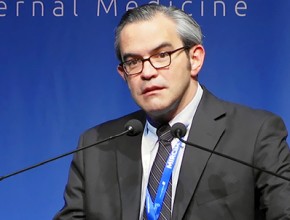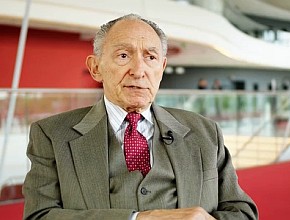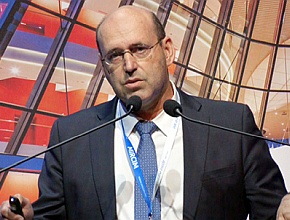Dr Dror Dicker is the head of the Department of Internal Medicine at the Rabin Medical Center (Israel) and co-chair of the Obesity Management Task Force of the European Association for the Study of Obesity.
Are there any new drugs that could be used in patients with type 2 diabetes mellitus to reduce weight?
Dror Dicker, MD: We have 2 main drug families that deal with weight loss and diabetes. The first is glucagon-like peptide 1 (GLP-1) receptor analogues, which work by reducing hunger and increasing satiety. We know from functional magnetic resonance imaging (MRI) that GLP-1 analogues affect the hypothalamus but also higher cognitive centers. The net effect is increasing satiety, reducing hunger, and looking on food in a very different way.
The second family is sodium-glucose cotransporter 2 (SGLT-2) inhibitors, which secrete carbohydrates, secrete glucose in urine, and by doing so they are reducing calories every day. But this is a little bit complicated, because there is a higher level of glucagon and greater hunger for carbohydrates with SGLT-2, so the net effect is around 3- to 4-kg weight loss. With a GLP-1 analogue, we see a higher reduction of weight, around 5% to 6%.
These 2 drug families that treat diabetes can also help in weight loss. If we have people with obesity and type 2 diabetes and we are concerned with their weight, according to the new guidelines we should use first GLP-1 analogues that are proven to reduce weight, and then, if we need better control of the glucose level, we can add SGLT-2.
From my experience the combinations of GLP-1 analogues and SGLT-2 are synergistic, because the GLP-1 analogue blunts the hunger for carbohydrates from SGLT-2. So it is a synergistic effect of these 2 antidiabetic and also weight-loss promoting medications.
 English
English
 Español
Español
 українська
українська











